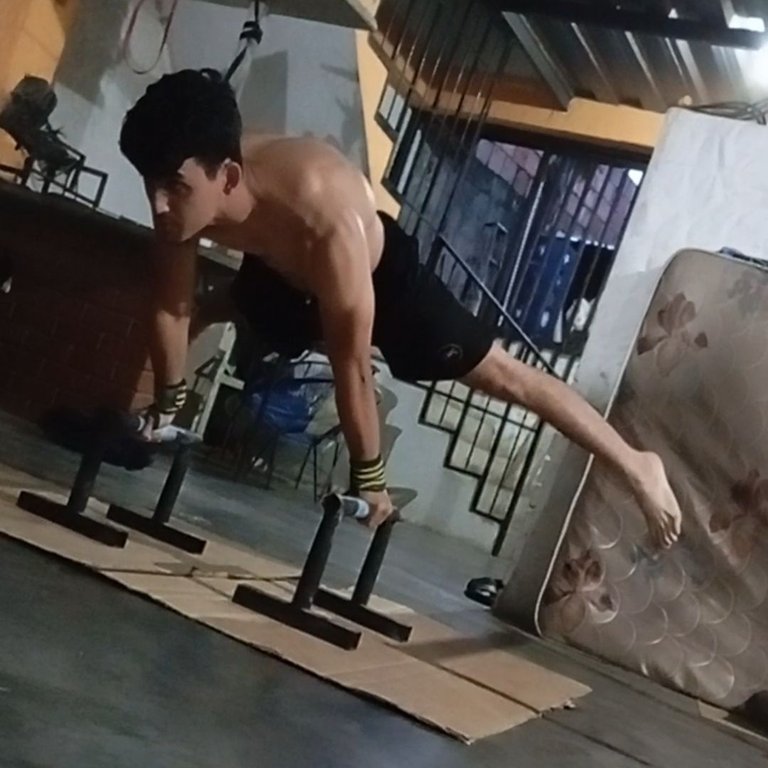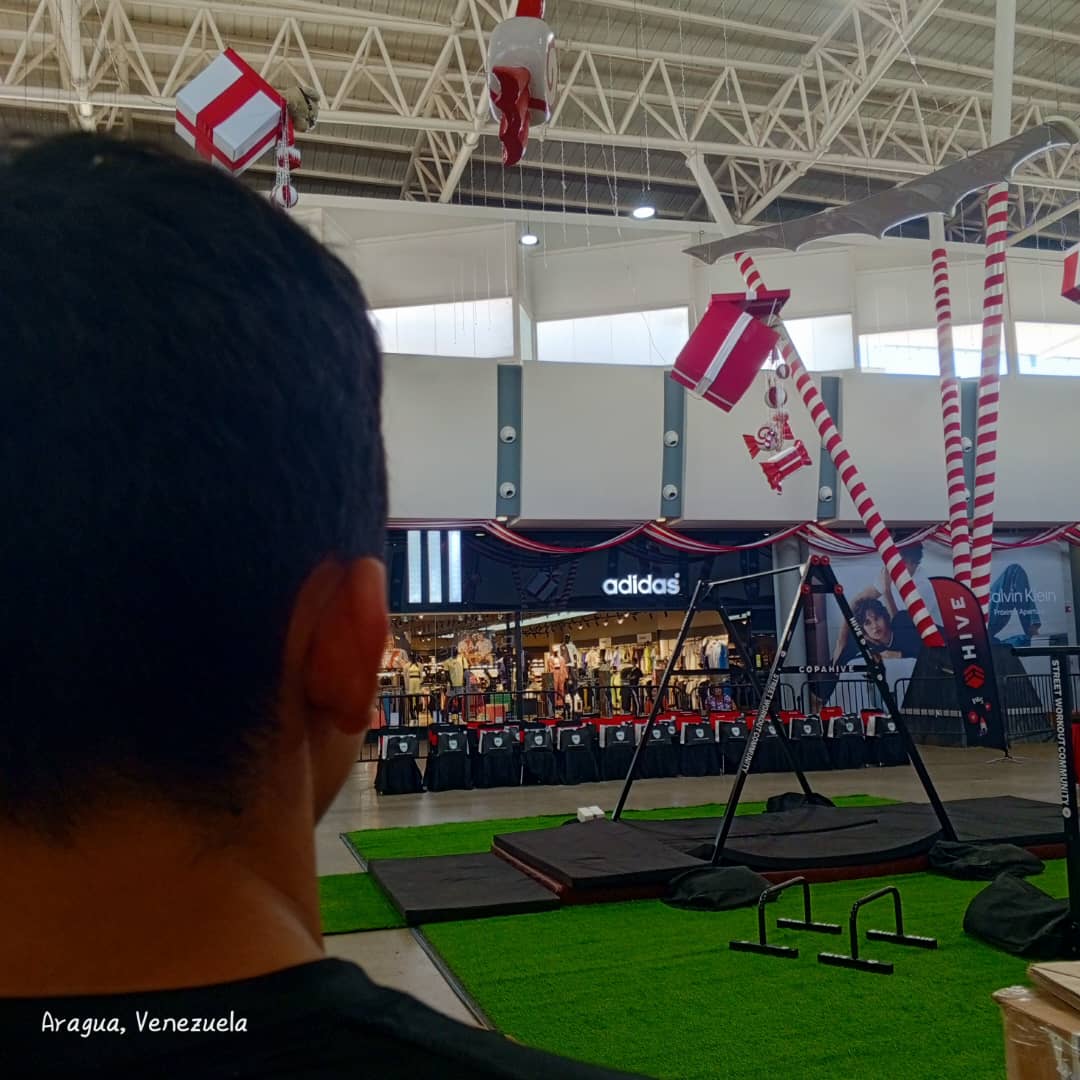Increasing volume or intensity in Sports | The key is progression, not speed [ENG/ESP]
| Street Workout Community |
|---|

English
Best regards, Hivers. How are you? I hope you're doing great. This time, I'll talk to you about whether rapidly increasing volume or intensity in sports is good or not.
No, rapidly increasing volume or intensity in sports is not good and, in fact, can be counterproductive and dangerous. While the body needs to be challenged to improve, an abrupt increase in training load significantly increases the risk of injury, overtraining, and burnout, sabotaging the athlete's long-term goals.
The safe and effective strategy for improving athletic performance is based on the principle of progressive overload. This fundamental principle of sports training dictates that the body should be subjected to slightly greater stress than it is accustomed to, in a gradual and planned manner, to stimulate adaptations that lead to greater strength, endurance, and capacity.
 |  |
|---|---|
 |  |

1). The Dangers of Rapid Gains
Excessively increasing volume (the amount of training, such as kilometers traveled or sets performed) or intensity (the effort exerted, such as weight lifted or speed) can lead to a number of negative consequences:
- Increased Risk of Injury: Muscles, tendons, ligaments, and joints need time to adapt to the increased load. A rapid increase can exceed their recovery and repair capacity, leading to common injuries such as tendonitis, muscle tears, stress fractures, and plantar fasciitis.
- Overtraining Syndrome: When the body doesn't have enough time to recover between intense training sessions, it can enter a state of overtraining. Symptoms include chronic fatigue, decreased performance, sleep disturbances, irritability, and a weakened immune system.
Physical and Mental Exhaustion (Burnout): The constant pressure of excessively hard training without adequate progression can lead to exhaustion, diminishing motivation and enjoyment of sports activities.
Performance Plateau or Decline: Although it may seem counterintuitive, "more" is not always "better." Too rapid an increase can lead to poor technique as the body attempts to compensate for fatigue, which can ultimately limit progress and even lead to a decline in performance.
 |  |
|---|---|
 |  |

2). Gradual and Planned Progression
The safe and effective alternative is a gradual and controlled increase in training volume or intensity. This allows the body to adapt positively and sustainably.
- Benefits of a progressive increase:
Optimal Physiological Adaptation: Allows the musculoskeletal, cardiovascular, and neuromuscular systems to be strengthened safely and efficiently.
- Injury Prevention: Gives tissues time to repair and strengthen, drastically reducing the likelihood of overuse injuries.
- Continuous and Sustainable Improvement: Facilitates consistent, long-term progress, avoiding plateaus associated with overtraining.
- Improved Technique: By not being constantly fatigued, the athlete can focus on maintaining good form and technique, which is crucial for performance and injury prevention.
- Mental Health and Motivation: Steady progress and the absence of pain or extreme fatigue contribute to maintaining a positive attitude and motivation toward training.
 |  |
|---|---|
 |  |

3). How to Increase Load Safely?
To effectively apply the principle of progressive overload, you can follow these general recommendations:
- The 10% Rule: A popular, though not strict, guideline is to not increase your total training volume by more than 10% per week.
- Listen to Your Body: Pay attention to your body's signals such as soreness, excessive fatigue, or lack of motivation. These may indicate that you need more recovery time.
- Training Periodization: Plan your training in cycles that alternate periods of increased load with periods of active recovery or lower intensity to facilitate adaptation.
- Vary the Stimulus: Don't limit yourself to always increasing the same parameter. You can increase the weight, number of repetitions, sets, decrease rest time, or introduce more complex exercises.
- Prioritize Rest and Nutrition: Adequate sleep and a balanced diet are essential for muscle recovery and adaptation.
 |  |
|---|

Patience and planning are key allies on the path to athletic improvement. Rapidly increasing volume or intensity invites injury and stagnation. The true key to success lies in a progressive and intelligent approach that respects the body's adaptation times. I'm omarzv-sw, and this was my post. See you later!
Spanish
Un enorme saludo, Hivers. ¿Cómo están? Espero que de maravilla. En esta oportunidad les hablaré respecto a si aumentar rápido el volumen o la intensidad en el deporte es bueno o no.
No, aumentar rápidamente el volumen o la intensidad en el deporte no es bueno y, de hecho, puede ser contraproducente y peligroso. Si bien el cuerpo necesita ser desafiado para mejorar, un incremento abrupto en la carga de entrenamiento eleva significativamente el riesgo de lesiones, sobreentrenamiento y agotamiento, saboteando a largo plazo los objetivos del deportista.
La estrategia segura y eficaz para mejorar el rendimiento deportivo se basa en el principio de sobrecarga progresiva. Este principio fundamental del entrenamiento deportivo dicta que el cuerpo debe ser sometido a un estrés ligeramente mayor al que está acostumbrado, de manera gradual y planificada, para estimular las adaptaciones que conducen a una mayor fuerza, resistencia y capacidad.
 |  |
|---|---|
 |  |

1). Los Peligros de un Aumento Acelerado
Incrementar de forma desmedida el volumen (la cantidad de entrenamiento, como kilómetros recorridos o series realizadas) o la intensidad (el esfuerzo realizado, como el peso levantado o la velocidad) puede acarrear una serie de consecuencias negativas:
- Mayor Riesgo de Lesiones: Los músculos, tendones, ligamentos y articulaciones necesitan tiempo para adaptarse al aumento de la carga. Un incremento rápido puede sobrepasar su capacidad de recuperación y reparación, llevando a lesiones comunes como tendinitis, desgarros musculares, fracturas por estrés y fascitis plantar.
- Síndrome de Sobreetrenamiento: Cuando el cuerpo no tiene el tiempo suficiente para recuperarse entre sesiones de entrenamiento intenso, puede entrar en un estado de sobreentrenamiento. Los síntomas incluyen fatiga crónica, disminución del rendimiento, alteraciones del sueño, irritabilidad y un sistema inmunológico debilitado.
Agotamiento Físico y Mental (Burnout): La presión constante de un entrenamiento excesivamente duro sin una progresión adecuada puede llevar al agotamiento, disminuyendo la motivación y el disfrute por la actividad deportiva.
Estancamiento o Retroceso en el Rendimiento: Aunque parezca contradictorio, "más" no siempre es "mejor". Un aumento demasiado rápido puede llevar a una técnica deficiente a medida que el cuerpo intenta compensar la fatiga, lo que a la larga puede limitar el progreso e incluso provocar un retroceso en el rendimiento.
 |  |
|---|---|
 |  |

2). Progresión Gradual y Planificada
La alternativa segura y efectiva es un aumento paulatino y controlado del volumen o la intensidad del entrenamiento. Esto permite que el cuerpo se adapte de forma positiva y sostenible.
- Beneficios de un aumento progresivo:
Adaptación Fisiológica Óptima: Permite que los sistemas musculoesquelético, cardiovascular y neuromuscular se fortalezcan de manera segura y eficiente.
- Prevención de Lesiones: Da tiempo a los tejidos para repararse y fortalecerse, reduciendo drásticamente la probabilidad de sufrir lesiones por sobrecarga.
- Mejora Continua y Sostenible: Facilita un progreso constante y a largo plazo, evitando los estancamientos asociados al sobreentrenamiento.
- Mejora de la Técnica: Al no estar constantemente fatigado, el deportista puede centrarse en mantener una buena forma y técnica, lo cual es crucial para el rendimiento y la prevención de lesiones.
- Salud Mental y Motivación: Un progreso constante y la ausencia de dolor o fatiga extrema contribuyen a mantener una actitud positiva y la motivación hacia el entrenamiento.
 |  |
|---|---|
 |  |

3). ¿Cómo Aumentar la Carga de Forma Segura?
Para aplicar el principio de sobrecarga progresiva de manera efectiva, se pueden seguir estas recomendaciones generales:
- La Regla del 10%: Una guía popular, aunque no estricta, es no aumentar el volumen total del entrenamiento en más de un 10% por semana.
- Escucha a tu Cuerpo: Presta atención a las señales de tu cuerpo como el dolor, la fatiga excesiva o la falta de motivación. Estos pueden ser indicativos de que necesitas más tiempo de recuperación.
- Periodización del Entrenamiento: Planifica tu entrenamiento en ciclos que alternen períodos de mayor carga con períodos de recuperación activa o menor intensidad para facilitar la adaptación.
- Varía el Estímulo: No te limites a aumentar siempre el mismo parámetro. Puedes incrementar el peso, el número de repeticiones, las series, disminuir los tiempos de descanso o introducir ejercicios más complejos.
- Prioriza el Descanso y la Nutrición: Un sueño adecuado y una alimentación balanceada son fundamentales para la recuperación y la adaptación muscular.
 |  |
|---|

la paciencia y la planificación son aliados clave en el camino hacia la mejora deportiva. Un aumento rápido del volumen o la intensidad es una invitación a las lesiones y al estancamiento. La verdadera clave del éxito reside en un enfoque progresivo y inteligente que respete los tiempos de adaptación del cuerpo. Soy omarzv-sw y esta fue mi publicación. ¡Hasta luego!
| Gracias por ver mi publicacion nos veremos pronto💪🏻. | Thank you for viewing my post we will see you soon💪🏻. |
|---|
| Créditos | Credits |
|---|---|
| Imágenes y separadores | Images and separators |
| @omarzv-sw | @omarzv-sw |
| Fecha | date |
| 24/06/2025 | 06/24/2025 |
.jpeg)
EDITION DETAILS
Photo editor: Canva
Translator: Translate Google
| Si te gusto mi contenido puedes visitar mis redes sociales | If you liked my content you can visit my social networks |
|---|
 |  |
Posted Using INLEO
El Goat ve 💪
Fuap acuetate
Ufff, una belleza de estáticos
Muchas gracias bro